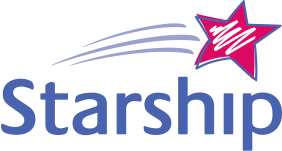Poisoning: Birth to 11 months
![ADHB-039[1] ADHB-039[1]](http://images.ctfassets.net/uszvm6pv23md/42k3M7mNDwNjoF3gfYn3yS/eca362980d09cfe9dd8d679abf3aea54/ADHB-039_1_.jpg)
How big a problem is it?
Poisoning is the sixth-leading cause of non-fatal unintentional injury to children aged 0-14. Around 3 children 0 – 2 years are hospitalised from a poisoning injury each week.
Who does it affect?
Poisoning is a real risk for babies and toddlers as they develop and begin to move independently. This is because babies and young children are naturally curious and learn by putting things in their mouths. They’re too young to know the difference between what is safe and what is dangerous. Crawling and attempting to stand is a key developmental behaviour at this age and it’s no surprise most poisonings happen at home. They involve everyday items such as cleaning products, medications, cosmetics and button batteries (see our separate section on these), glue, alcohol and even plants. Babies aren’t necessarily put off by a bitter or sour taste, especially if things look like lollies.
There are a number of things you can do to prevent accidental poisoning.
Top Tips
Be S.A.F.E.
|
People working in injury prevention also suggest the following tips will help your child avoid injury.
Take a good look around your home for any unwanted or expired medications or chemicals and dispose of them safely.
If you become distracted while using a cleaning product, take it with you when you deal with the issue.
It’s tempting to refer to medicines and vitamins as lollies, however this is confusing and potentially dangerous to a young child as they may seek them out when you’re not looking. Best to avoid this.
First Aid
If your child has swallowed something and you’re not sure if it may have a poisonous effect, phone the National Poisons Centre on 0800 POISON (0800 764 766). Call 111 if the child is unconscious or has stopped breathing and start CPR immediately.
Follow DRS ABCD to start CPR
D Dangers? Check for any dangers to yourself such as electricity or traffic.
R Responsive? Check responsiveness by calling loudly and shaking the child's arm.
S Send for help. Dial 111 and confirm an ambulance is on its way. Use the appropriate emergency number in other countries.
A Airway. Open the airway by moving the head into a neutral position and lifting the chin. Do not tilt the head back too far.
B Breathing. Look and feel for movement of the lower chest and stomach area. Listen and feel for air coming from the nose or mouth.
C CPR. If the child is not breathing, start CPR - 30 compressions to 2 breaths. Put the child on a firm surface. Place the heel of one hand in the centre of the chest just below the nipples. Push down hard and fast 30 times in about 15 seconds (push down one-third of chest depth). Once you have completed 30 compressions (pushes) on the chest, breathe into the baby's mouth 2 times. Seal your lips around the child’s mouth breathe into their mouth while pinching their nose closed. Gently puff into the child until you see their chest rise. Continue with the cycle of 30 chest compressions and 2 breaths until the ambulance arrives.
D Defibrillator. Attach defibrillator as soon as it is available and follow prompts.
The CPR advice is from the KidsHealth website and a page containing the Basic Life Support Flow Chart. The Basic Life Support Flow Chart is developed by the New Zealand Resuscitation Council and Australian Resuscitation Council. For more information see www.nrc.org.nz
Links to Safekids’ resources
Download Poisons reference card
Poisoning Prevention Resources
Links to other organisations’ resources
New Zealand's National Poisons Centre
Toxinz - Poisons Information
Public Health Surveillance - Chemical Injuries Surveillance
Pharmacy Guild of NZ
Landcare Research Manaaki Whenua Factsheet on Poisonous Plants
